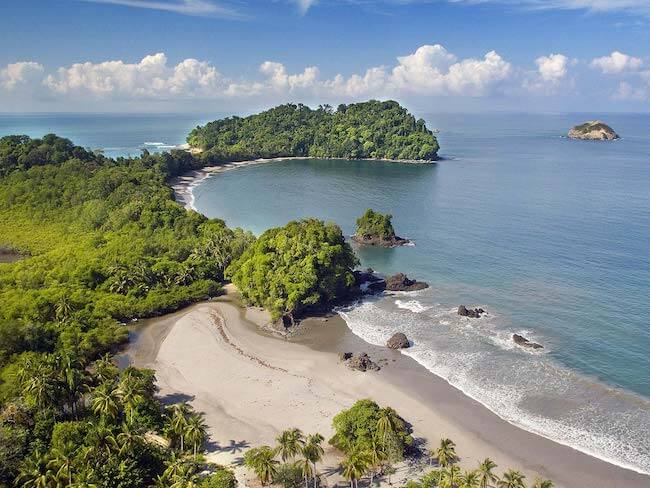As vaccination rates increase and travel restrictions continue to ease, the pent-up demand for travel is clear, with TSA reporting record numbers of passengers since March 2020. With that in mind, The Disability Tribune wanted to bring your attention to some sensory and disability-friendly experiences striving to create accessible communities, so all travelers have the opportunity to break from the monotony of quarantine and enjoy a bucket list trip. Here are 8 accessible travel options to consider as you plan your next getaway.
Your 2021 Accessible Travel Checklist
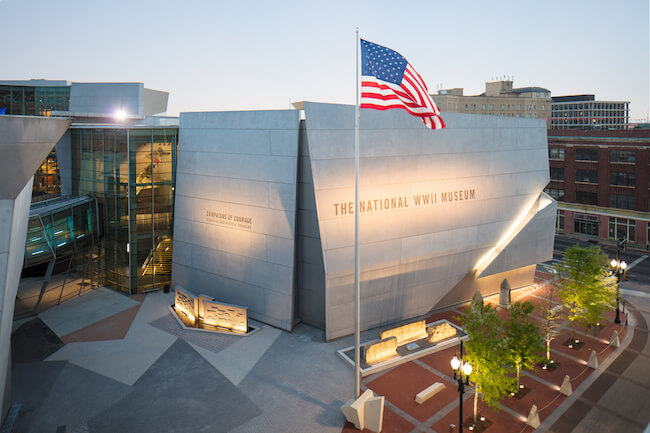
Credit: The National WWII Museum
1. New Orleans, LA – The National WWII Museum
Rated the #3 museum in the United States, according to the 2018 TripAdvisor Travelers’ Choice Awards, The National WWII Museum is continually enhancing its offerings to ensure that all history enthusiasts can explore its 300,000 sq. ft. of immersive exhibits and multimedia experiences safely and comfortably, including renewing its Sensory Inclusive certification with KultureCity. In addition to offering daily sensory bags with noise-cancelling headphones, sunglasses, fidgets, Feeling Zone thermometers, non-verbal cards and a KultureCity lanyard, the Museum has launched Sensory Friendly Mornings. Occurring the last Saturday of each month, the museum experience will be modified to make the visit more sensory-friendly for pre-registered guests by lowering the sound volume in louder areas, alerting visitors in areas where headphones are recommended, and offering designated Quiet Areas including private Quiet Rooms as needed. Guests will also receive a Social Story ahead of time to help plan their visit based on the content and advisories of each building. Additional information can be found here.
2. Various Destinations – Intrepid Travel
World leading adventure tour operator, Intrepid Travel, offers Tailor-Made trips, ideal for those looking to dream and design a trip that cannot be Googled. Tailor-Made trips offer fully custom or ready-made itineraries that can be personalized or adapted to suit the group’s comfort level, and to travelers with a disability. Travelers will have access to destination specialists who have expert local knowledge and will have the flexibility to choose when and where they’d like to begin their trip, thanks to flexible booking. Choose from unique accommodations with great character, and select the number of meals, public or private transport, number of activities, and more. A local guide will escort the group every step of the way. Whether the group is celebrating a special occasion or embarking on a special adventure, Tailor-Made trips offer authentic local experiences that you won’t find in a search engine. For example, Intrepid previously worked with athlete Dan Berlin to become the first blind person to run the Inca Trail in a single day in an astonishing 13 hours. Due to the ongoing impact of COVID-19, Intrepid Travel has made a number of updates to their safety guidelines, flexible booking conditions and trip departures.
3. Various Locations – Wheel the World
As a leader in the accessible travel category, and rated #1 by Lonely Planet in diversity and inclusion, Wheel the World offers a platform of accessible tours, experiences, accommodation and travel – encouraging exploration of the world and creating an atmosphere of unity among people with disabilities, their companions, and nature. From international surf trips, to rainforest tours, to volcano trekking, to dune bashing, Wheel of the World offers adventure in 40 destinations around the world and on every continent. With a mission to create experiences that are adaptive to specific needs, they plan trip recommendations based on individual questionnaire answers and are available 24/7 should you need assistance while abroad. Additional information on specific destinations can be found here.
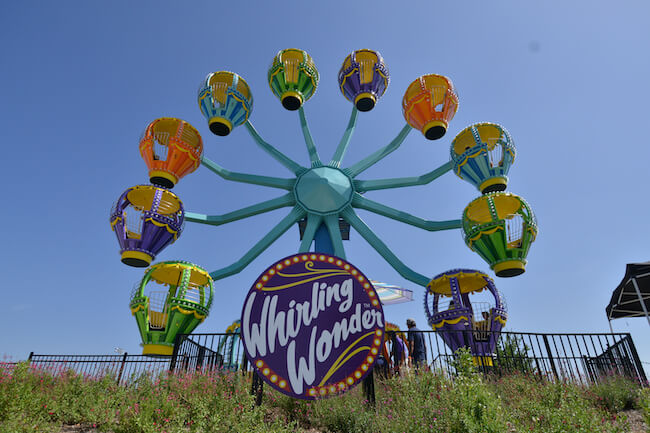
Credit: Morgan’s Wonderland
4. San Antonio, TX – Morgan’s Wonderland
Opened in April of 2010, Morgan’s Wonderland is a first of its kind amusement park, designed entirely with special needs individuals in mind. The park features 25 Ultra-Accessible attractions including a sensory village, ferris wheel, swings and the water park, Morgan’s Inspiration Island, with no entry cost for those with special needs. Some highlights throughout the park include:
- Sensory Village – Imaginations can run wild at Morgan’s Wonderland’s Sensory Village, a make-believe community that encourages creativity. Visitors can head to the Fix-It Shop for a simulated test drive or visit Paramount Theater to watch interactive videos. Younger guests can stop by the Village Market grocery store and go on imaginary shopping trips, before heading to KMWL-TV to see themselves on TV.
- Whirling Wonder – This colorful ferris wheel takes guests on a mile ride, high up in the sky, for panoramic views of Morgan’s Wonderland. Located next to Starlight Amphitheater, right on the shoreline of Morgan Wonderland’s 8-acre lake, Whirling Wonder takes guests up five and a half stories and is visible from over a half-mile away.
- Wheelchair Swings – Kids of all ages can safely soar through the air on more than 30 traditional or adaptive swings, including those designed to accommodate wheelchairs.
- Morgan’s Inspiration Island – Keeping with the mission of Morgan’s Wonderland of being a safe and inclusive place to play, Morgan’s Inspiration Island is a tropical-like paradise filled with colorful splash pads, slides and a river boat adventure ride. Waterproof wheelchairs are even available to rent so that every visitor can partake in the fun.

Credit: Visit St. Pete/Clearwater
5. Florida – St. Pete/Clearwater
St. Pete/Clearwater aims to be a fun-filled, accessible vacation destination for individuals and families, whether they prefer sun-drenched beaches or want to experience the vibrant cultural/arts scene of the region.
- The Dali Museum – The Dali Museum wants every traveler to enjoy their visit. The museum offers a limited number of wheelchairs for public use within the building on a first come, first serve basis. For visitors with auditory needs, free audio content can be accessed by downloading the Dalí Museum App, including audio descriptions of selected artworks. The museum also offers a limited supply of courtesy Induction Neck loops, and ASL interpretation can be requested 2 weeks prior to visits at no charge. For visitors with vision needs, The Dalí Museum App interfaces with personal device Voice Over or TalkBack verbal description capabilities. For visitors with cognitive impairment needs, quiet hours are offered at the Museum on Sundays from 10am until noon.
- Museum of Fine Art – The MFA welcomes families with children with sensory sensitivities to explore the galleries on “Sensory Saturdays” every second Saturday of the month, from 10 am to 12 pm. During this time, all rotating audio components will be turned down or muted to ensure a calm environment. Visitors will receive a pre-packaged sensory bag with a guiding prompt, sketching materials, or other sensory-friendly activities.
- Great Explorations Children’s Museum- Great Explorations is listed as Autism Friendly in the Center for Autism and Related Disabilities (CARD) Autism Friendly Business Directory. The museum’s full and part-time staff has attended trainings with CARD staff to increase awareness of the needs of visitors on the autism spectrum, and to enhance the team’s ability to respond effectively and sensitively to these needs. Great Explorations is also accessible to wheelchair users and other visitors who need to avoid stairs.
- Tradewinds Island Resort on St. Pete Beach – As a designated special needs friendly resort by Be Friendlier, Tradewinds staff undergoes continuous training to ensure they understand sensitivities, developmental disabilities and unique situations so they are equipped to help all families and children enjoy their stay. The resort offers a Be Friendlier safety kit (for a small replacement charge) complete with door alarms, extra batteries, visual aide “STOP” prompt signs, corner guards, stove knob covers, and outlet covers. Tradewinds also offers waterproof temporary safety tattoos with room for phone/room numbers, and gluten-free menu options for those with dietary restrictions.
6. Florida – The Beaches of Fort Myers and Sanibel
As an inclusive destination, The Beaches of Fort Myers and Sanibel features easy, accessible tourism information for persons with disabilities. A full guide details access to everything from getting to and from the airport, visiting attractions and best places to stay. Highlights include:
- Airport – accessible parking, bathrooms and multiple ramps for wheelchair access.
- Ground transportation – public bus transportation provided by LeeTran with discounted passes and accessible vehicles available for rent at multiple locations including Avis and Advantage.
- Visiting attractions –
- Arts & Entertainment: Multiple art venues including Alliance for the Arts and Edison & Ford Winter Estates have accessible parking, entrance, restrooms, and seating, as well as audio described performances and pre-show touch tours for the visually impaired.
- Beaches, Parks and Nature: Accessible parking, entrance, bathrooms and rentals at multiple locations including Bowman’s Beach Park, Cayo Costa State Park, and J.N. “Ding” Darling National Wildlife Refuge.
- Outdoor Activities & Sports: Accessible baseball/softball fields, stadium, soccer fields and restrooms at multiple locations including JetBlue Park and Mike Greenwell’s Bat-A-Ball & Family Fun Park.
- Shopping: Accessible parking and entry with ramps and curb cuts, plus accessible restrooms and fitting rooms at multiple locations including Edison Mall and Miromar Outlets.
- Tours: Captain Bubby’s IsLAND Tours offers tour service throughout Lee County using a van equipped with adaptations for physically challenged and/or visually impaired.
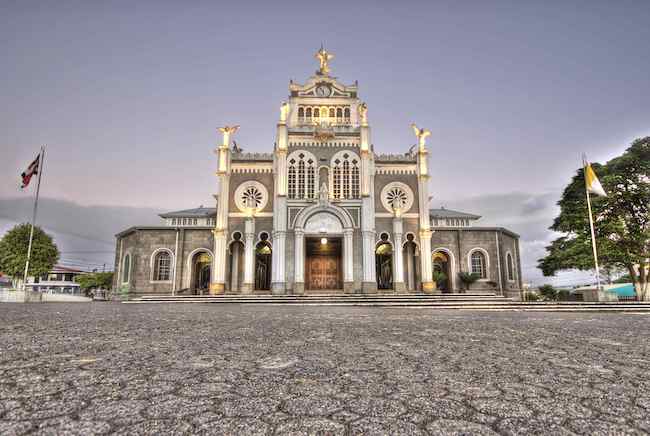
Credit: Costa Rica Tourism Board
7. Costa Rica
New, innovative design and growing social awareness in Costa Rica are poised to make the Central American country’s natural wonders available to all. Costa Rica’s tourism industry is actively working to create more accessible travel experiences throughout the country, though several national parks, beaches and cultural attractions already possess disability-friendly designs.
- National Parks: Several of Costa Rica’s top national parks offer a range of accessible tours and accommodations. Manuel Antonio National Park opened a universal wheel-chair friendly trail called “El Manglar,” or the mangrove, in February 2018 for those with limited mobility. The trail, built over a mangrove, goes from the main national park entrance down to Espadilla Sur Beach and connects with other existing trails. El Manglar has 10 bays with information in Braille about the characteristics and attractions of each area of the park. Arenal Volcano National Park, home to the active Arenal Volcano, offers a completely handicap accessible experience with its trails at the “La Peninsula” zone. Carara National Park features low-incline paved trails, Braille and other information aids.
- Beaches: Costa Rica’s Jacó Beach is the first beach in Central America to be fully accessible to people with disabilities. In March 2019, Jacó Beach inaugurated a 206-foot long ramp constructed out of recycled plastic, which gives wheelchair users complete access to the shore and simultaneously reflects the country’s sustainability mission. Earlier this year, Playa Hermosa was declared another completely accessible beach in Costa Rica, with features including disability-friendly toilets, changing sinks and showers, and a transfer crane for those in wheelchairs. The beach features 52 meters of retractable walkway, made of recycled wood generated from 2,600 kilos of plastic, which provides access to the ocean. Costa Rica has an “Accessible Beach” program, led by the Costa Rican Accessible Tourism Network Association with the support of the Costa Rica Tourism Board, that works to make all beaches in the country more accessible by providing the proper equipment.
- Downtown San José: Travelers can rest assured that the sidewalks and pedestrian streets, as well as various cultural attractions of Costa Rica’s capital city of San José are disability-friendly. The remarkable National Museum, Jade Museum and Gold Museum are completely wheelchair accessible.
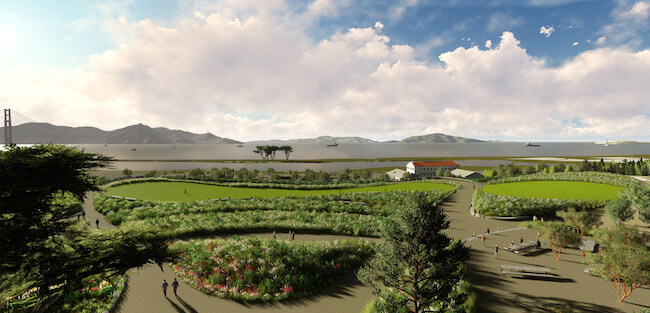
8. The Presidio Tunnel Tops – San Francisco, California
The Presidio Tunnel Tops project, comprising 14 acres of new national park land—will be an iconic “must see” San Francisco destination for the local community and visitors, offering a much needed sustainable green space to the city when it debuts in spring 2022. Thoughtfully designed by James Corner Field Operations (the firm behind New York City’s famed High Line), the Presidio Tunnel Tops will feature scenic overlooks with stunning views of the Golden Gate Bridge and the City, paths and gardens, a welcome plaza with food and visitor services, a campfire circle, picnic grounds and more. The Presidio Tunnel Tops will welcome people from all backgrounds and abilities to an inclusive and safe space, providing a green oasis right within the city limits. To accommodate visitors with disabilities specifically, the park provides accessible city park space for all and a direct connection from the Main Post where wheelchairs and other necessities can be found. Additionally, Presidio Park has wheelchair accessible nature trails — from concrete and asphalt sidewalks to hard-packed sand and gravel — running throughout the park so everyone can enjoy the native wildlife. The buildings in the park, such as the Visitor Center, Walt Disney Family Museum, and Main Post are all wheelchair accessible. In 2019, The Presidio hosted a focus group with disabled individuals to provide feedback on accessibility at the park and how they could improve the experience for wheelchair users.
How many of the above accessible travel destinations have you visited or do you plan to visit? Do you have other accessible travel tips to share? Please let us know in the comments below!

